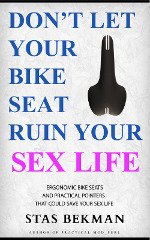16 Books about phonographs
Description
This article is from the Antique Radios And Phonographs FAQ, by Hank van Cleef vancleef@netcom with numerous contributions by others.
16 Books about phonographs
Books about phonographs are written mostly by hobbyists,
not engineers or academics. Below is a listing of common
sources to get you going in the hobby.
1. "The Compleat Talking Machine" by Eric L. Reiss, Vestal Press,
1986, is the most important book for a beginner. It lists not only
many models, but it tells how to oil a machine and how to make
most repairs. Order from: The Antique Phonograph Supply
Company, Route 23, Box 123, Davenport Center, NY 13751-0123.
(607) 278-6218. Order this book first. A second edition is
being advertised as available in the Summer of 1996. It is
supposed to contain new material and added hints.
2. For books about Edison machines, George Frow has written
the "bibles." For cylinder machines, order "Edison Cylincer
Phonograph Companion." It was newly revised in 1994 and
contains about all you can possibly want to know about the
various models. Note: it does not discuss prices. Earlier
editions of this book are found only in rare book rooms of
a few libraries. The only drawback to this book are the
photographs, which are small and dark. The second book
by Frow covers diamond disc phonographs by Edison (the
'thick' records players): "The Edison Disc Phonographs
and the Diamond Discs: A history with Illustrations),
1982. APSCO sells both. You may also contact
George Frow, "Salterns," Seal Hollow Road,
Sevenoaks, Kent TN13 3SH, England.
3. For Victor machines, there is also one book everyone
uses called "Look for the Dog" by Robert Baumbach. A
new paperback edition is out. The illustrations are good,
but the discussion is more limited than what is found in
Frow's books on Edison. APSO sells this book too.
4. The main 'general' book on phonographs
is called "From Tinfoil to Stereo: The Acoustic Years
of the Recording Industry 1877-1929" by Walter L.
Welch and Leah Brodbeck Stenzel Burt. University
of Flordia Press, 1994. Yes, it is somewhat
scholarly and does contain some errors, as do many
of the books about phonographs. Some reviewers
found dozens of errors on dates.
5. Magazines about phonographs are few and far
between. However, I recommend the following for
the beginner in the hobby because they are readily
available, appear regularly and are nicely done:
A. "Victrola and 78 Journal" is a new journal and
a nice mixture of articles on records and how to care
for your elderly phonograph. Contact Tim Gracyk,
1509 River Oak Way, Roseville, CA 95747.
Email: tgracyk@garlic.com (916) 784-1929.
B. "Hillandale News" published by the City of London
Phonograph and Gramophone Society. This is a nicely
produced magazine. Contact Chris Hamilton,
"Ardlarich", 2 Kirlands Park, Cupar, Fife KY 15 4EP England.
C. "In the Groove," a monthly newsletter published by
the Michigan Antique Phonograph Society. Contact
John Whitacre, Editor, MAPS, 2609 Devonshire,
Lansing, MI 48910. 517-482-7996. If you are
looking for parts, this is the place to start.
They publish resource guide and membership
directory which lists about 800 phonograph
collectors and about every known organization
dealing with phonographs and parts in the
world. This is the document to get if
you want to buy parts or look for local
dealers.
6. As for places to get repairs done,
some members of this news group recommend you
contact Dwayne Wyatt of Wyatt's Music
World, PO Box 601, Lakeport, CA 707 263-5013.
The catalog lists all the parts for various Edison
cylider and Amberola phonographs, with a price for
each and every screw, gear and so forth. Columbia
Grafanola, Models AT, AZ, and Q and some Victors and
Brunswicks are also listed. He sells reproduction
Cygnet Horns.
Also, APSO listed above does compete overhauls
of old phonographs and supplies parts.
The above sources are enough to get you started.
They are not a complete listing of very book about
Victors or Thomas Edison. They are, however,
the most important pieces of information and
enough to answer many (if not all) questions.
For the most new information possible, get the
resource guide from MAPS.
Continue to:

